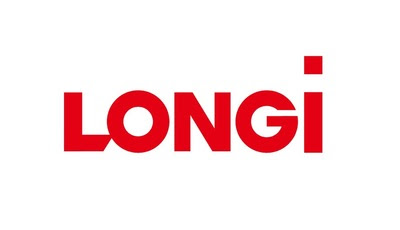MONTREAL, Nov. 1, 2021 /PRNewswire/ — Ovivo Inc. (“Ovivo”), a global provider of water and wastewater treatment equipment, technology and systems, is pleased to announce that Cembrane A/S (“Cembrane”) has joined the Ovivo group.
Founded in 2014 and based in Lynge, Denmark, Cembrane produces a unique patented Silicon Carbide (“SiC”) flat sheet membrane used by water & wastewater treatment OEM & system integrators worldwide for a wide variety of applications in drinking water and wastewater within both the municipal and industrial markets. Cembrane’s SiC membrane technology is integrated into more than 450 installations in 65 countries and is a perfect complement to Ovivo’s process and system expertise. Ovivo has worked with many types of membranes in the past, but after several years of testing, installing and operating over 50 installations with Cembrane SiC membranes, Ovivo has designated Cembrane SiC membranes as its preferred membrane technology in the future.
Water is a finite resource that needs to be treated, recovered and reused as much as possible. Membranes play a key role in treating water to the highest quality and allowing us to clean and protect this precious resource. In comparison to conventional membranes that can experience operational challenges when stressed, Cembrane SiC technology is very resilient, as the silicon carbide’s natural properties effortlessly attract water while repelling foulants. This results in extremely high sustainable fluxes and the ability to operate reliably with high solids and oils, as well as under other difficult conditions that polymeric membranes struggle with. Silicon carbide is also one of the hardest materials in the world and is able to withstand the broadest range of temperatures, pH, chemicals, and pressures. SiC membranes have achieved a new level of performance in some of the most demanding water and wastewater treatment applications.
The partnership between Cembrane and Ovivo started in September 2018 when Ovivo signed an exclusive licensing agreement and took a minority participation in Cembrane. Since then, Ovivo has successfully integrated Cembrane’s SiC membranes into many of its solutions. The integration of Cembrane within the Ovivo group will not only enhance growth in Ovivo’s existing markets, but it will also create opportunities with new solutions that are aligned to its customers’ need for durability, highest performance and sustainability. As part of Ovivo, Cembrane will operate under its own brand name and will continue to be led by Lasse Andreassen, as Chief Executive Officer of Cembrane.
“We are delighted to welcome Cembrane and its employees as part of the Ovivo family after successfully partnering with them for several years,” says Marc Barbeau, President and Chief Executive Officer of Ovivo. “Our mission is to provide sustainable and efficient water treatment solutions to our customers through expertise and innovation, and the SiC membrane technology developed by Cembrane is the perfect product to deliver sustainable and innovative value added solutions to our customers” concluded M. Barbeau.
“Ovivo is a world leader in water and wastewater treatment with whom we developed a very close and strong relationship over the years. I think that it is the perfect sponsor with a strategic and global reach to support the long-term success and development of Cembrane and its employees,” said Lasse Andreassen, Chief Executive Officer and former main shareholder of Cembrane.
Come and meet Cembrane at stand 05.475C at Aquatech, between November 2nd and 5th, 2021, in Amsterdam, Netherlands.
About Ovivo Inc.
Ovivo is a global provider of equipment, technology and systems producing among the purest water and treating some of the most challenging wastewater in the industry. Ovivo is a powerful global brand with renowned trademarks, possessing more than 150 years of expertise and references in water treatment, supported by its proprietary products, advanced technologies and extensive system integration knowhow. Ovivo delivers conventional to highly technological water treatment solutions for the industrial and municipal markets, and leverages its large installed base of equipment around the world to offer parts and services to its customers. Ovivo is dedicated to innovation in an industry that is in constant evolution and offers water treatment solutions that are cost-effective, energy-efficient and environmentally sustainable.
Ovivo operates an integrated global platform in 15 countries, and employs more than 1,000 worldwide experts in water treatment. Ovivo is owned by German SKion Water GmbH, a global technology and solution provider as well as plant manufacturer, in both municipal and industrial water and wastewater technology. SKion Water is a subsidiary of German entrepreneur Susanne Klatten’s investment holding SKion GmbH. For more information, visit our website at www.ovivowater.com.
For more information about Cembrane, visit www.cembrane.com.
Pierre-Marc Sarrazin, Vice President, Corporate Finance and Treasury, Tel.: 514 284-7208, pierre-marc.sarrazin@ovivowater.com
Photo – https://mma.prnewswire.com/media/1673291/Ovivo_Inc__Cembrane_Joins_Ovivo_to_Propel_the_Growth_of_its_Sili.jpg




